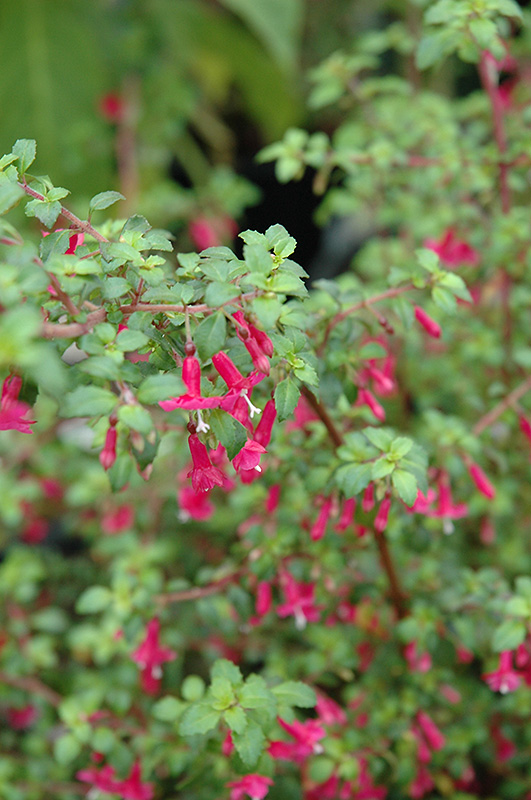Plant Finder
Height: 24 inches
Spread: 24 inches
Sunlight:
![]()
Hardiness Zone: 6b
Other Names: Encliandra Fuchsia, Thyme Leafed Fuchsia
Description:
A fine fuchsia variety featuring dainty purple-pink nodding flowers; small thyme-like leaves create a fine texture; very attractive to hummingbirds
Ornamental Features
Thyme-Leaved Fuchsia features dainty nodding fuchsia trumpet-shaped flowers with white anthers along the branches from mid spring to early fall. It has green evergreen foliage. The small serrated oval leaves remain green throughout the winter.
Landscape Attributes
Thyme-Leaved Fuchsia is a multi-stemmed evergreen shrub with an upright spreading habit of growth. Its relatively fine texture sets it apart from other landscape plants with less refined foliage.
This is a relatively low maintenance shrub, and should only be pruned after flowering to avoid removing any of the current season's flowers. It is a good choice for attracting hummingbirds to your yard. Gardeners should be aware of the following characteristic(s) that may warrant special consideration;
- Insects
Thyme-Leaved Fuchsia is recommended for the following landscape applications;
- Accent
- General Garden Use
- Container Planting
Planting & Growing
Thyme-Leaved Fuchsia will grow to be about 24 inches tall at maturity, with a spread of 24 inches. It tends to fill out right to the ground and therefore doesn't necessarily require facer plants in front. It grows at a medium rate, and under ideal conditions can be expected to live for approximately 20 years.
This shrub should be grown in a location with partial shade or which is shaded from the hot afternoon sun. It does best in average to evenly moist conditions, but will not tolerate standing water. It is not particular as to soil type or pH. It is somewhat tolerant of urban pollution. This species is not originally from North America.
Thyme-Leaved Fuchsia makes a fine choice for the outdoor landscape, but it is also well-suited for use in outdoor pots and containers. With its upright habit of growth, it is best suited for use as a 'thriller' in the 'spiller-thriller-filler' container combination; plant it near the center of the pot, surrounded by smaller plants and those that spill over the edges. It is even sizeable enough that it can be grown alone in a suitable container. Note that when grown in a container, it may not perform exactly as indicated on the tag - this is to be expected. Also note that when growing plants in outdoor containers and baskets, they may require more frequent waterings than they would in the yard or garden.




